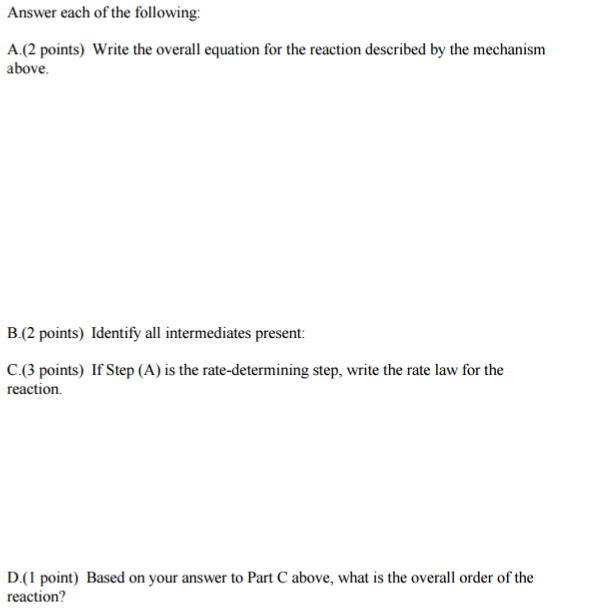Write the overall equation for the reaction described by the mechanism above?
Consider the following mechanism:
(A) 2 NO2(g) → N2O4(g)
(B) N2O4(g) + CO → NO(g) + CO2(g)+NO2(g)

Consider the following mechanism:
(A) 2 NO2(g) → N2O4(g)
(B) N2O4(g) + CO → NO(g) + CO2(g)+NO2(g)

1 Answer
Here's my reasoning.
Explanation:
A. Overall equation
B. Identify all intermediates
An intermediate is a species that is formed from the reactants and reacts further to give the products of a chemical reaction.
In other words, it is neither a reactant or nor product. It occurs only in the middle of a reaction mechanism.
Hence,
C. Write the rate law
Each step in a mechanism is an elementary reaction, and a reaction can go no faster than its slowest step.
Hence, for Step (A), the rate law is
D. Order of reaction
The order of the reaction is the sum of the exponents in the rate law.
The reaction is second order.

